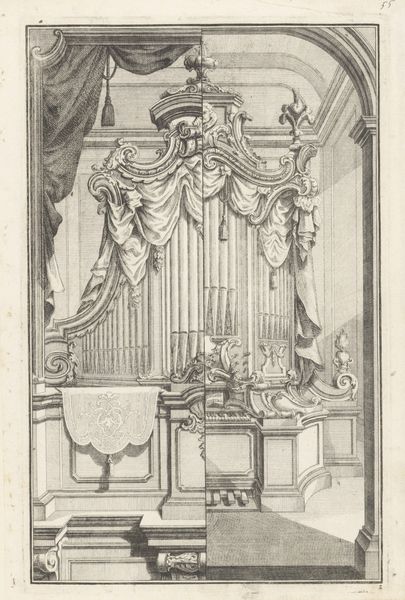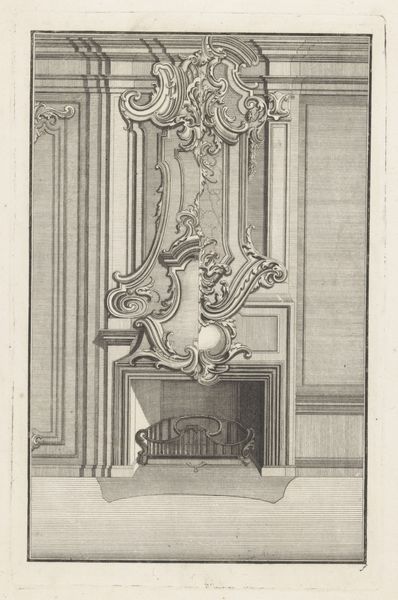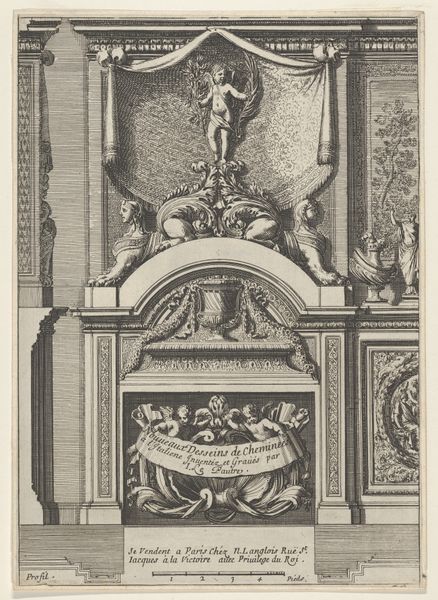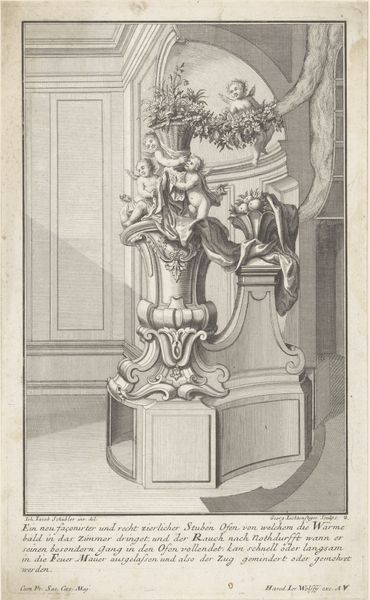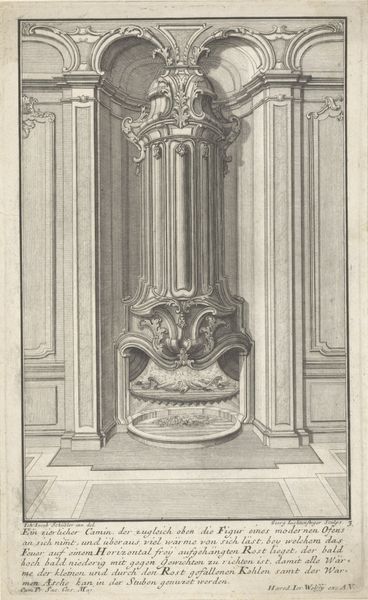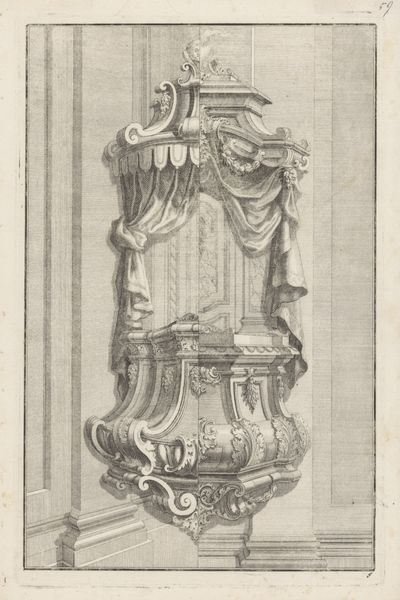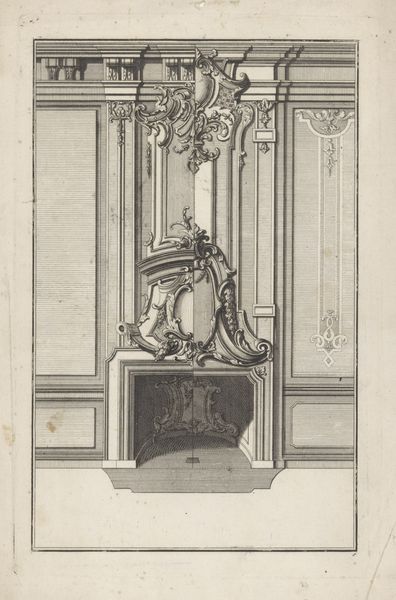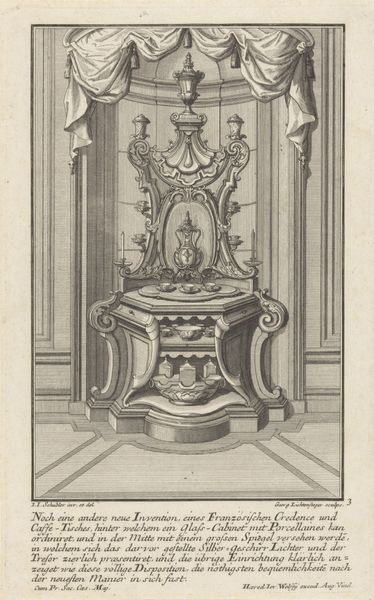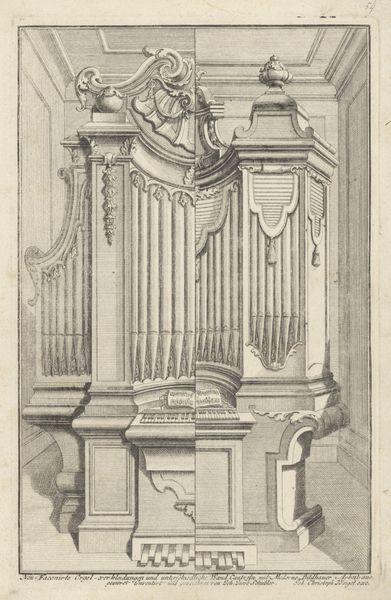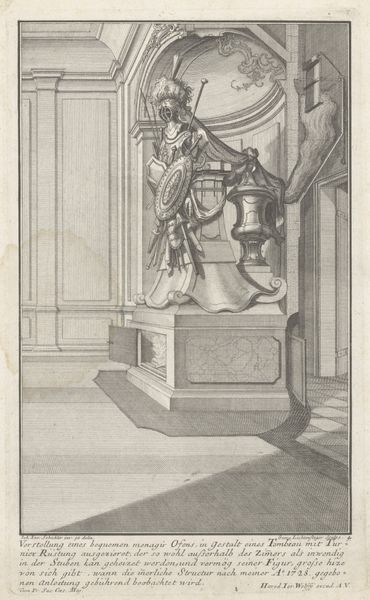
print, engraving, architecture
#
baroque
# print
#
figuration
#
geometric
#
line
#
history-painting
#
engraving
#
architecture
Dimensions: height 292 mm, width 178 mm
Copyright: Rijks Museum: Open Domain
Curator: Here we have Johann Matthias Steudlin’s engraving, "Organ with Putti," made sometime after 1724. Editor: It’s striking how detailed the lines are for an engraving! The architecture and musical instrument almost feel like they’re dominating the space. What jumps out to you when you look at this? Curator: Immediately, I'm drawn to the method of its production. This wasn't simply *drawing*. The lines—the raw material—were created by laborious, repetitive cuts into a metal plate. How do the sharp contrasts, the density of line, speak to the religious function of the space and the musical instrument within it? Think about the labor, skill, and expense required to produce such an image. What was the original use for an image like this? Editor: Well, given that it’s a print, and therefore reproducible, it could have served a didactic purpose – illustrating contemporary organ design? Maybe to influence further commissions of such baroque-style organs in churches? Curator: Exactly! It also serves to disseminate stylistic preferences of the time. Consider, too, how the materials of this piece--paper, ink, metal plate--democratized access to images, compared to frescoes. Before printmaking, only the elite could access certain visual styles. This print brings ornate architectural design to a broader audience. Editor: That makes me think about the economics of art production, and how innovations in materials impact not just style, but social access. Curator: Precisely. Think about the engraver as a skilled laborer, replicating designs, fulfilling market demands, and shaping visual culture. So much more than *just* an artwork, isn't it? Editor: Definitely given me a lot to think about, looking beyond just aesthetics and thinking about how these images were actually made and circulated in society!
Comments
No comments
Be the first to comment and join the conversation on the ultimate creative platform.

